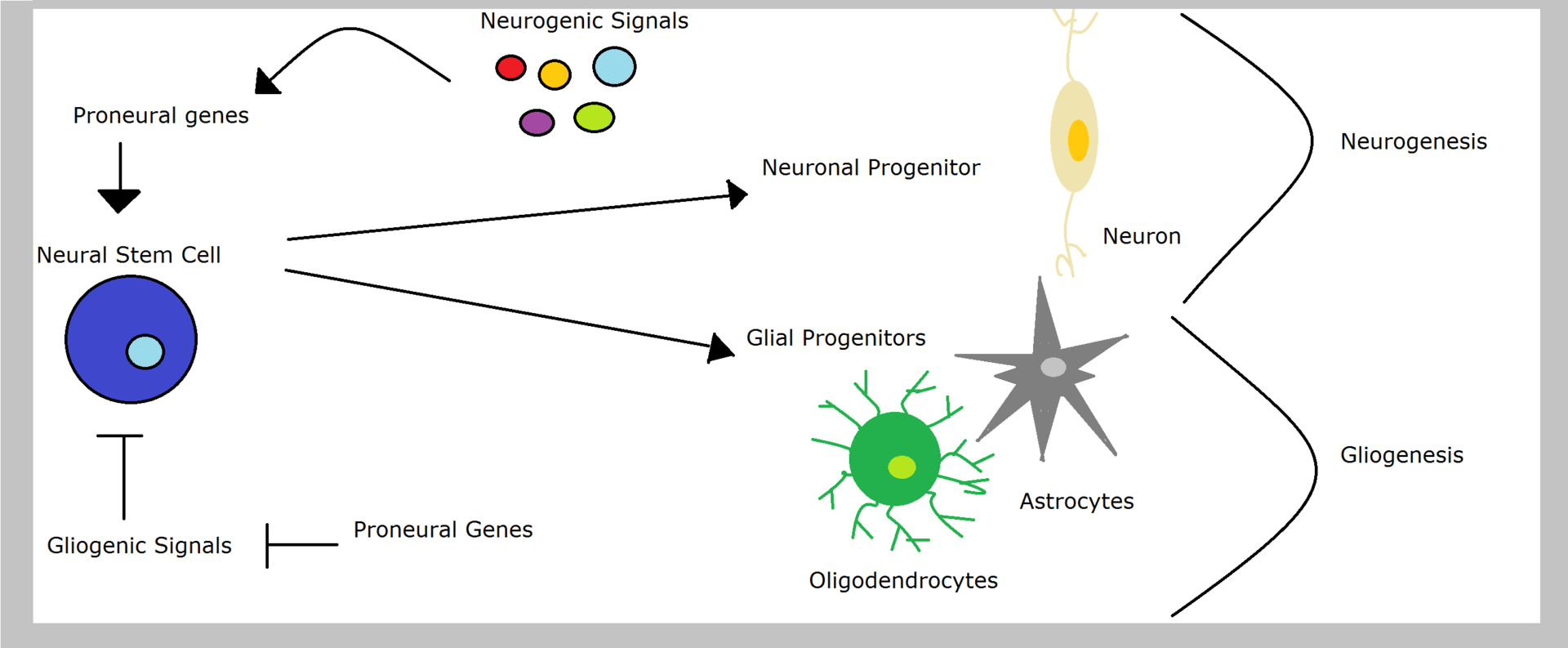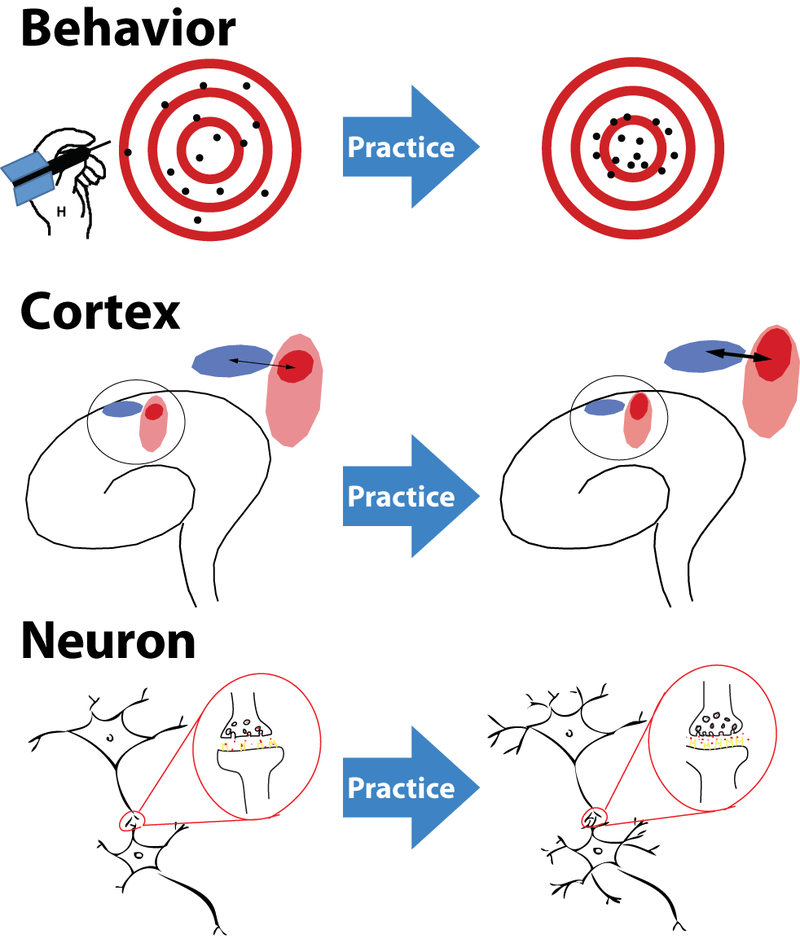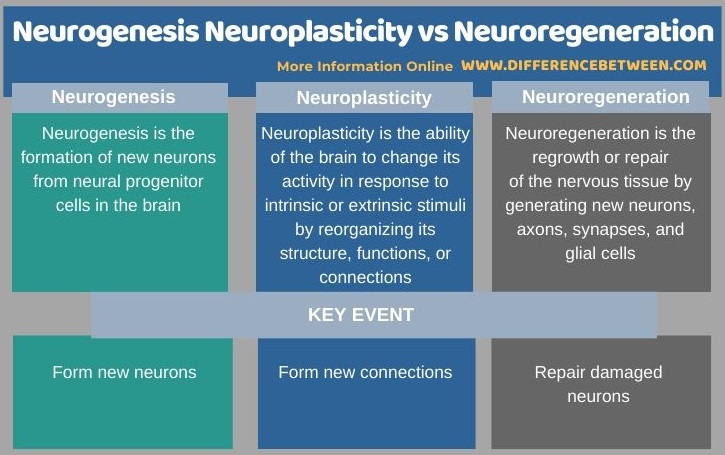Difference Between Neurogenesis Neuroplasticity and Neuroregeneration
The key difference between neurogenesis neuroplasticity and neuroregeneration is that neurogenesis refers to the formation of new neurons in the brain while neuroplasticity refers to the brain’s ability to reorganize itself by forming new neural connections throughout life and neuroregeneration refers to the regrowth or repair of nervous tissue, cells or cell products.
Injuries in the nervous system can result in neurodegenerative diseases such as Alzheimer’s disease, Parkinson’s disease, amyotrophic lateral sclerosis, multiple sclerosis and multiple system atrophy. Our nervous system has only a limited capacity to repair. Neurogenesis, neuroplasticity and neuroregeneration are three key processes related to nervous tissue. Neurogenesis is the formation of new neurons from the neural stem and progenitor cells. Neuroplasticity is the brain’s ability to adapt while neuroregeneration is the regrowth or repair of the nervous tissue.
CONTENTS
1. Overview and Key Difference
2. What is Neurogenesis
3. What is Neuroplasticity
4. What is Neuroregeneration
5. Similarities Between Neurogenesis Neuroplasticity and Neuroregeneration
6. Side by Side Comparison – Neurogenesis vs Neuroplasticity vs Neuroregeneration in Tabular Form
7. Summary
What is Neurogenesis?
Neurogenesis is the process by which new neurons are formed in the brain from neural stem and progenitor cells. It is a vital process during embryonic development, and it takes place at higher rates. However, neurogenesis also takes place after birth in certain parts of the brain, and it continues for the entire lifetime. But the rate declines with aging.

Figure 01: Neurogenesis
The neural stem cells divide indefinitely and produce neural progenitor cells. Neural progenitor cells differentiate into specific neurons. Moreover, neural stem cells differentiate into glial progenitor cells which give rise to glial cells such as astrocytes, oligodendrocytes and microglia. Patients who are suffering from Alzheimer’s disease or Parkinson’s disease have impaired neurogenesis. Adult neurogenesis holds the key to treating neurodegenerative conditions such as Alzheimer’s disease.
What is Neuroplasticity?
Neuroplasticity is the ability of the brain to adapt. When we interact with the environment, a lot of physiological changes takes place in the brain. Therefore, our brain forms new connections and pathways and change according to them. Neuroplasticity includes a collection of different brain changes and adaptation phenomena.

Figure 02: Neuroplasticity
There are two types of neuroplasticity as structural neuroplasticity and functional neuroplasticity. Neurogenesis contributes to neuroplasticity. Similar to neurogenesis, neuroplasticity is an alternative therapy for neurodegenerative diseases.
What is Neuroregeneration?
Neuroregeneration is the regrowth or repair of the nervous tissue. It can be done by generating new neurons, axons, myelin, synapses and glial cells. This process differs between the central nervous system (brain and spinal cord) and the peripheral nervous system. The peripheral nervous system has an inherent ability for neuroregeneration. In contrast, most parts of the central nervous system are unable to self-repair and regenerate.

Figure 03: Nerve Damage
Neuroregeneration can restore interrupted neuronal connectivity. During neuroregeneration, the existing axons are elongated. Moreover, sprouting and growth of new neurons from the soma of the neural cells, as well as remyelination take place. Transplantation of stem cells a promising strategy for neuroregeneration.
What are the Similarities Between Neurogenesis Neuroplasticity and Neuroregeneration?
- Neurogenesis, neuroplasticity and neuroregeneration are three processes occurring in the nervous tissue.
- All three processes aid in brain recovery after damage, especially after a stroke or traumatic injury.
- The concept of neuroregeneration includes neurogenesis and neuroplasticity.
What is the Difference Between Neurogenesis Neuroplasticity and Neuroregeneration?
Neurogenesis is the formation of new neurons from neural progenitor cells in the brain while neuroplasticity is the ability of the brain to change its activity in response to intrinsic or extrinsic stimuli by reorganizing its structure, functions, or connections. Neuroregeneration, on the other hand, is the regrowth or repair of the nervous tissue by generating new neurons, axons, synapses, and glial cells. So, this is the key difference between neurogenesis neuroplasticity and neuroregeneration.

Summary – Neurogenesis Neuroplasticity vs Neuroregeneration
In summarizing the difference between neurogenesis neuroplasticity and neuroregeneration, neurogenesis is the formation of new neurons from neural stem and progenitor cells while neuroplasticity is the ability of the brain to form new connections and pathways and change how its circuits are wired and neuroregeneration is the regrowth or repair of the nervous tissue. All these processes are important in treating neurodegenerative disorders.
Reference:
1. “What Is Neurogenesis?”. Qbi.Uq.Edu.Au, 2020, Available here.
2. “What Is Neuroplasticity? A Psychologist Explains [+14 Exercises]”. Positivepsychology.Com, 2020, Available here.
3. “Neuroregeneration”. En.Wikipedia.Org, 2020, Available here.
Image Courtesy:
1. “Proneural genes in neurogenesis and gliogenesis pathway” By NCD project – Own work (CC BY-SA 3.0) via Commons Wikimedia
2. “Brain neuroplasticity after practice” By Bokkyu Kim at English Wikipedia (CC BY-SA 3.0) via Commons Wikimedia
3. “Guillain-barré syndrome – Nerve Damage” By Doctor Jana – (CC BY 4.0) via Commons Wikimedia
ncG1vNJzZmivp6x7pbXFn5yrnZ6YsqOx07CcnqZemLyue8OinZ%2Bdopq7pLGMm5ytr5Wau266xK6pqJ%2BVo7K0tdJmpZ6toqS9ra3SraCcoaSueqK6w2alnq2ipL%2Bms8SnnKuZpJ68r3s%3D